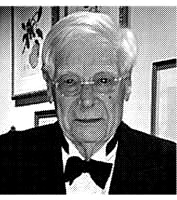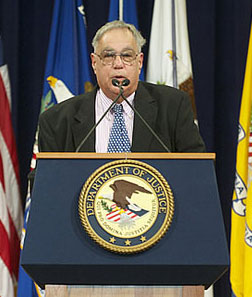Robert Brandt von Mehren, one of New York’s and the nation’s leading lawyers, especially in the field of arbitration, died on May 5th at age 93. He was a retired partner in the Debevoise & Plimpton law firm, a Manhattan and Martha’s Vineyard resident, and a man of brilliance and, I found, charm and kindness.
In recent years, I spoke and emailed a few times with Mr. von Mehren as I was researching and writing an essay, “No College, No Prior Clerkship,” on James M. Marsh, Justice Robert H. Jackson’s 1947-1949 law clerk at the U.S. Supreme Court. (Click here for an abstract of the essay, and click here to buy the new book, Of Courtiers and Kings: More Stories of Supreme Court Law Clerks and Their Justices, in which my essay appears along with many strong pieces and a range of fascinating material.)
I contacted Mr. von Mehren because he was a cameo player in the process by which Justice Jackson hired Jim Marsh.
In 1946, von Mehren was clerking for Judge Learned Hand at the United States Court of Appeals for the Second Circuit. Prior to that, as a Harvard Law School student, von Mehren compiled a tremendous academic record, including serving as president of the Harvard Law Review. Unbeknownst to von Mehren, someone—probably Jackson’s incumbent law clerk, Murray Gartner, himself a former Harvard Law Review president—had flagged von Mehren for Jackson’s consideration to be Gartner’s successor as Jackson’s law clerk. Jackson was (properly) very impressed with von Mehren’s credentials, but in the end Jackson ranked von Mehren second to Marsh and hired him.
This all was news, and interesting, to Mr. von Mehren. He told me that he never applied to or interviewed with Jackson.
It all worked out. Justice Stanley Reed hired von Mehren to be his law clerk in that Supreme Court year (October Term 1947). As Reed’s clerk, von Mehren got to see Justice Jackson and all of the Justices of that era (Vinson, Black, Frankfurter, Douglas, Murphy, Rutledge and Burton were the others) in action. And von Mehren got to know and like Jackson’s clerk, Jim Marsh.

Von Mehren during his clerkship
with Justice Reed
Von Mehren’s path was a notable rise from remote beginnings. He and his identical twin brother Arthur were born in Albert Lea, a city in southern Minnesota, in August 1922. The boys grew up fluent in English, of course, and in Danish and Norwegian (hat tip: Daniel R. Coquillette). (Ninety-two years later, I could hear a trace of that—Robert pronounced his name “fun-MAY-won” in a soft European accent).
In high school, Robert won a scholarship to Yale University, from which he graduated summa cum laude. At Harvard Law School, he graduated magna cum laude. After clerking for the great Judge Hand and for the very capable Justice Reed, he became associated with Debevoise, his professional home for most of his career. (Luckily, because it’s more and worthy information, his law firm webpage is still “up”—click here.)
(And Arthur? He attended Harvard University and then, with Robert, Harvard Law School. He also earned a Harvard Ph.D. in Government, joined the Harvard Law School faculty, and became one of its giants—click here for one memorial and here for one obituary following his death in 2006.)
For more on Robert von Mehren’s accomplished and full life, click here and here.
May he rest in peace.






